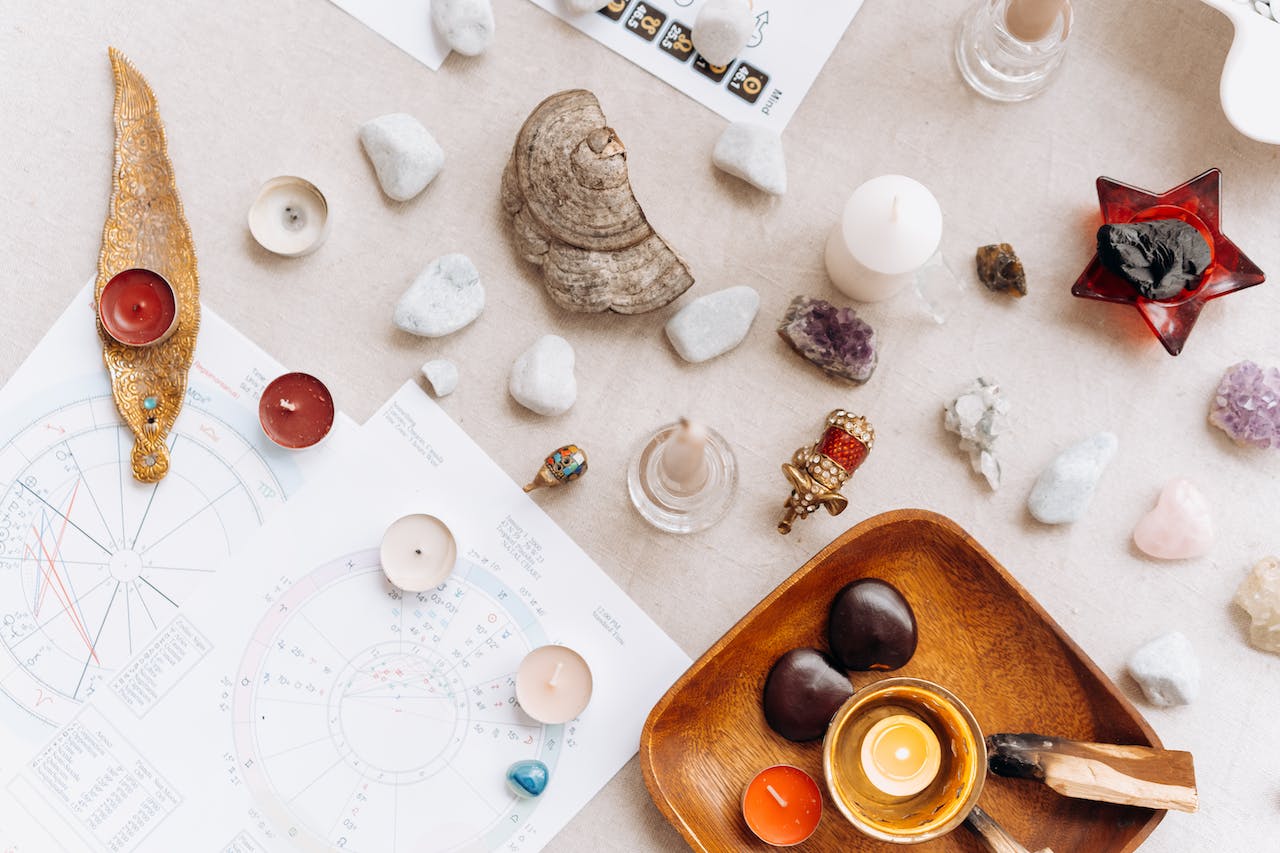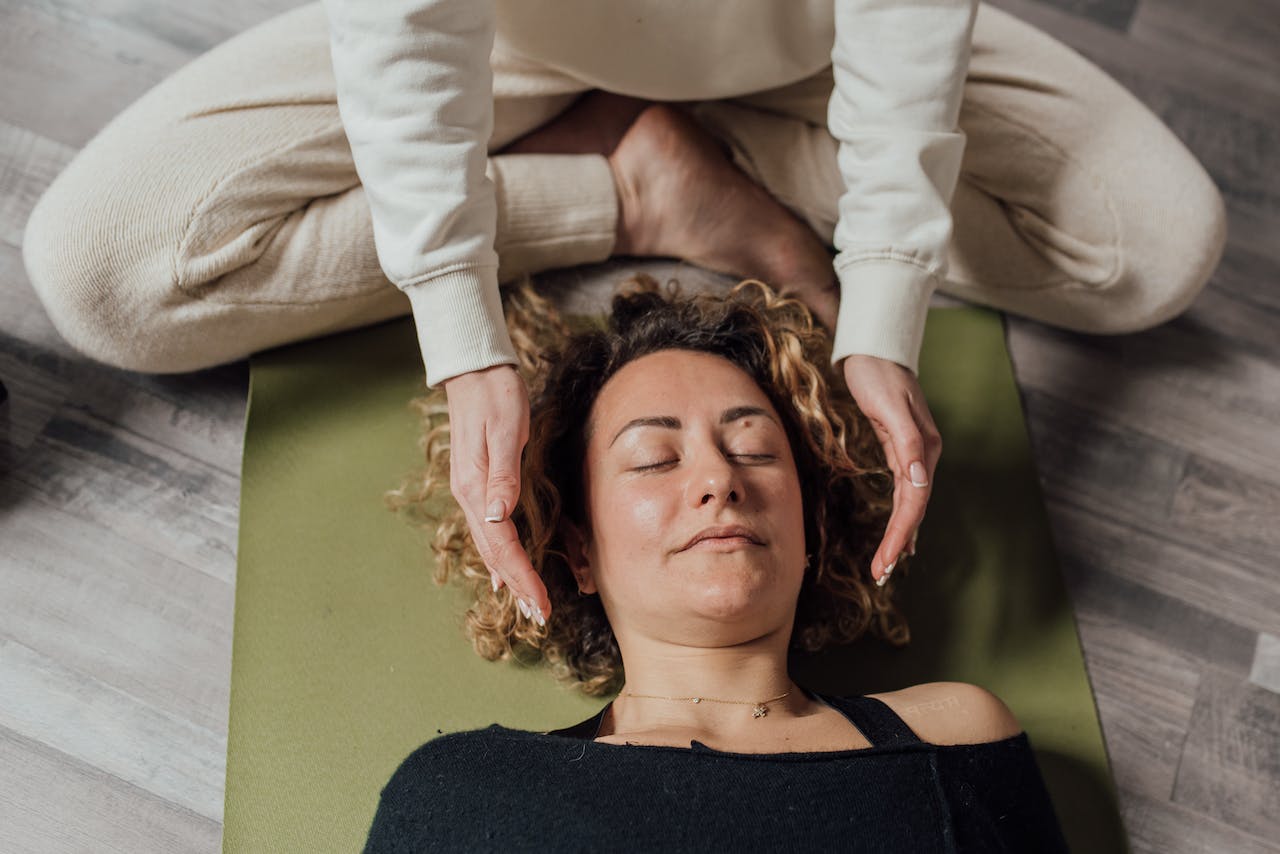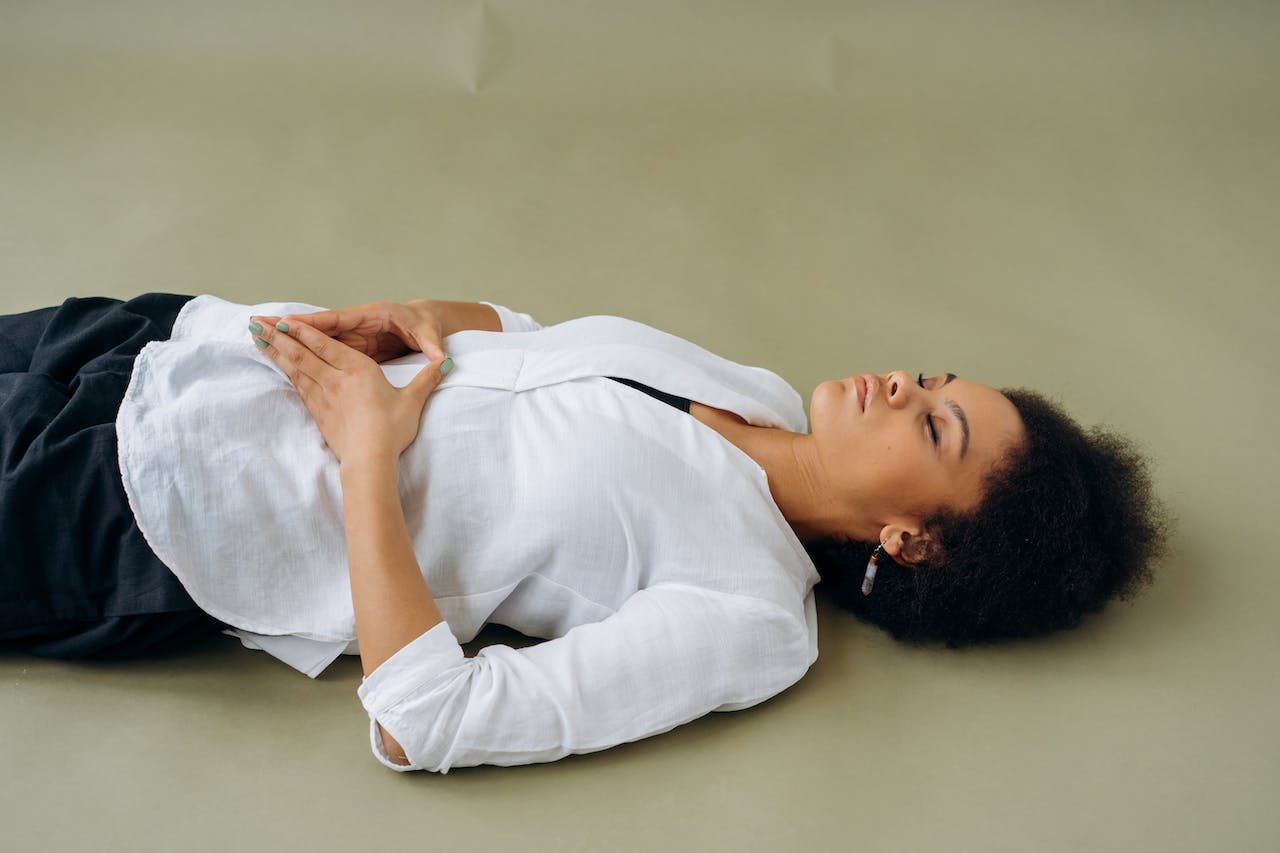
Reiki, a holistic healing practice that originated in Japan, revolves around the concept of channeling universal life energy to promote balance and well-being. At the heart of Reiki lies the significance of hand positions, a fundamental aspect of the healing process.
In this article, we delve into the intricacies of hand positions reiki, exploring their role, significance, and the various positions practitioners employ to harness and direct healing energy.
What Is Reiki?
Japanese culture is the origin of Reiki, a healing practice and spiritual philosophy. To facilitate healing and restore equilibrium, practitioners of this alternative treatment method often physically place their hands on or near the body of the patient or client.
Reiki practitioners open themselves up to receiving Reiki (also called Universal Life Energy) for themselves or others. All living creatures, including ourselves, derive their vitality from this Universal Life Energy. It exists in all things.
Origins Of Reiki - The Birth Of Healing Energy
The history of hand positions in Reiki can be traced back to the early 20th century in Japan. Mikao Usui, a spiritual seeker, sought to discover the ancient secrets of healing.
In his quest, Usui embarked on a spiritual journey on Mount Kurama, where he experienced a profound enlightenment, leading to the creation of Reiki.
Usui's Revelation - Rediscovering Healing Touch
During his spiritual awakening on Mount Kurama, Usui received a set of symbols and mantras that became the foundation of Reiki.
He realized that by placing his hands on specific areas of the body, he could channel healing energy. It marked the inception of hand positions in Reiki as a fundamental aspect of the practice.
Development Of Hand Positions - From Intuition To Systemization
Following Usui's revelation, the practice of Reiki spread in Japan. Initially, practitioners relied on intuitive hand placements guided by their connection to the universal life force.
As Reiki expanded, the need for a more structured approach arose, leading to the development of systematic hand positions that aligned with the body's energy centers.
Chujiro Hayashi - Systematizing Hand Positions
Chujiro Hayashi, one of Usui's prominent students, played a crucial role in systematizing Reiki hand positions. Drawing upon his background as a naval officer and physician, Hayashi applied a more clinical and systematic approach to Reiki.
He introduced specific hand positions corresponding to the body's chakras, laying the groundwork for the standardized techniques used in Reiki today.
Hawayo Takata - Bringing Reiki To The West
Hawayo Takata, a Japanese-American woman, played a pivotal role in popularizing Reiki in the West. Trained by Hayashi, Takata introduced Reiki to North America in the mid-20th century.
As part of her efforts to make Reiki more accessible, she further refined and standardized hand positions, making them a central element of Reiki training.
Western Adaptations - Standardization And Integration
As Reiki continued to spread globally, various schools and lineages emerged, each contributing to the evolution of hand positions.
Western adaptations often emphasized standardized hand placements, making Reiki more structured and easily teachable. This shift facilitated the widespread acceptance and integration of Reiki into mainstream holistic healing practices.
Contemporary Practices - Blending Tradition And Innovation
In the 21st century, Reiki continues to thrive, with practitioners honoring both traditional hand positions and incorporating innovative approaches.
While some adhere closely to the teachings of Usui, Hayashi, and Takata, others explore intuitive and personalized hand placements, adapting Reiki to suit the needs of modern seekers.
Scientific Recognition - Validating Reiki Hand Positions
The history of Reiki hand positions has witnessed a shift in perception, with scientific studies increasingly exploring the efficacy of this healing practice.
Research on energy medicine and the mind-body connection has provided a foundation for understanding how Reiki hand positions may positively influence physical and emotional well-being.
The Significance Of Hand Positions Reiki
Reiki, a holistic healing practice, places a profound emphasis on the strategic placement of hands over the body. This intentional and gentle touch forms the core of Reiki, with each hand position carrying a unique significance in channeling universal life energy.
The significance of hand positions in Reiki extends beyond mere physical contact; it encompasses spiritual, emotional, and energetic dimensions, fostering a comprehensive approach to well-being.
Balancing Energy Centers - Harmonizing The Chakras
One of the primary significances of Reiki hand positions lies in their ability to balance the body's energy centers, known as chakras. Each hand position is specifically designed to correspond with a particular chakra, facilitating the unobstructed flow of energy throughout the body.
This balance not only promotes physical health but also contributes to emotional and spiritual harmony.
Stress Reduction And Relaxation - Easing Tension
The gentle touch associated with Reiki hand positions induces a state of deep relaxation. As practitioners place their hands on various parts of the body, tension, and stress are released, allowing the recipient to enter a calm and peaceful state.
This relaxation response not only contributes to immediate well-being but also supports the body's natural healing processes over time.
Promoting Self-Healing - Awakening The Body's Innate Capacity
Reiki operates on the principle that the body possesses an innate ability to heal itself. By employing specific hand positions, practitioners aim to activate and enhance this natural healing mechanism.
The energy transferred through the hands is believed to stimulate the body's healing resources, promoting recovery from physical ailments and fostering emotional and mental well-being.
Energetic Cleansing - Clearing Blockages And Stagnation
Another critical significance of Reiki hand positions is their role in clearing energetic blockages and stagnation. Practitioners believe that disruptions in the flow of life energy contribute to illness and imbalance.
By placing hands on specific areas and using intentional gestures, Reiki practitioners aim to dissipate these blockages, allowing energy to move freely and restoring vitality.
Emotional Release And Spiritual Connection - Nurturing The Whole Being
Beyond the physical realm, Reiki hand positions hold significance in addressing the emotional and spiritual aspects of an individual. The practice is thought to help release stored emotional traumas and facilitate a deep sense of inner peace.
Moreover, the connection between the practitioner's hands and the recipient is seen as a conduit for spiritual energy, fostering a sense of interconnectedness and spiritual well-being.
Catalyzing Mind-Body Harmony - The Somatic Connection
Reiki's significance is not limited to spiritual or energetic realms; it extends to the intricate connection between the mind and body. The bodily experience induced by Reiki hand positions acknowledges that emotional and psychological states can manifest physically.
By addressing both the physical and energetic aspects simultaneously, Reiki promotes holistic mind-body harmony.
Facilitating Intuition And Mindfulness - A Dynamic Exchange
Practicing Reiki hand positions involves a dynamic exchange between the giver and the receiver. The significance lies in the intuitive guidance of the practitioner, who tunes into the recipient's energy and responds accordingly.
This process fosters mindfulness, enhancing the awareness of both the practitioner and the recipient, creating a harmonious and receptive healing environment.
Exploring Common General Hand Positions In A Reiki Session
Reiki sessions are a unique and personalized experience guided by the practitioner's intuition and the recipient's energy needs. While the specifics of hand positions can vary, there are standard general hand placements that one might encounter during a Reiki session.
These positions are strategically chosen to address various energy centers and promote overall balance and well-being.
Crown Chakra
At the beginning or end of a Reiki session, practitioners often place their hands gently on the crown of the recipient's head. This hand position is associated with the crown chakra, which represents spiritual connection and unity.
It aims to open channels to higher states of consciousness and invite a sense of divine energy into the healing process.
Third Eye Chakra
Placing hands on the forehead, just above the space between the eyebrows, corresponds to the third eye chakra.
This position is thought to enhance intuition and insight. By channeling healing energy to the third eye, practitioners aim to promote clarity of thought, heightened perception, and a deepened sense of inner wisdom.
Throat Chakra
The throat chakra, located in the throat area, is associated with communication. During a Reiki session, practitioners may place their hands on the front or back of the neck to promote the free flow of energy in this area.
This hand position aims to facilitate open and honest expression, allowing the recipient to communicate more authentically.
Heart Chakra
Placing hands over the chest corresponds to the heart chakra, which represents love and compassion. This common hand position in Reiki aims to open the heart center, fostering a sense of love, not only for others but also for oneself. It is believed to promote emotional healing and enhance the capacity for empathy.
Solar Plexus Chakra
The area around the upper abdomen is associated with the solar plexus chakra, which relates to personal power and self-esteem. Practitioners may place their hands in this region to balance and strengthen the solar plexus, fostering a sense of confidence and empowerment in the recipient.
Sacral Chakra
Placing hands on the lower abdomen corresponds to the sacral chakra, which is linked to creativity and emotions. This hand position aims to release blockages in the sacral energy center, promoting a healthy expression of feelings and enhancing the recipient's connection to their creative energy.
Root Chakra
At the base of the spine lies the root chakra, associated with grounding and stability. During a Reiki session, practitioners often place their hands on the lower back or hips to address this foundational energy center. This hand position aims to enhance feelings of security and stability, promoting a sense of rootedness.
Full Body Scan
Reiki practitioners may perform a full-body scan by moving their hands over the recipient's energy field without direct physical contact.
This technique allows them to detect areas of imbalance or stagnation. By scanning the entire body, practitioners can identify specific hand positions needed to balance and harmonize the overall energy flow.
Grounding Hand Positions
In some sessions, practitioners may include grounding hand positions, involving placing hands on the soles of the feet or the lower legs. These positions are designed to facilitate a connection to the Earth's energy, promoting a sense of stability and grounding.
Hand Positions Reiki For Treating Others
Face
Gently placing hands on the recipient's face is a common Reiki hand position. It aims to channel healing energy to the facial area, promoting relaxation and releasing tension stored in the muscles. The face is a gateway to emotional expression, and Reiki in this area contributes to overall emotional well-being.
Crown And Top Of The Head
The crown chakra, situated at the top of the head, is a focal point for spiritual connection. Placing hands on the crown and the top of the head during a Reiki session helps open channels to higher consciousness. This hand position is instrumental in inviting divine energy and fostering a sense of inner peace.
Back Of The Head
The back of the head is a significant area for Reiki practitioners. Placing hands here can alleviate stress and promote mental relaxation. This position is often used to address the mental and emotional aspects of well-being, contributing to a sense of calm and tranquility.
Chin And Jawline
Addressing the chin and jawline during a Reiki session helps release tension held in the jaw muscles. This hand position is beneficial for individuals experiencing jaw pain, teeth grinding, or general stress-related tension in the face. It contributes to a more relaxed and comfortable facial state.
Neck, Collarbone, And Heart
Placing hands on the neck, collarbone, and heart area is a holistic hand position in Reiki. This position aligns with the throat and heart chakras, promoting clear communication and nurturing love and compassion. It is instrumental in releasing blockages in these energy centers and fostering emotional well-being.
Ribs And Rib Cage
The rib cage is a vital area for Reiki hand positions. By placing hands on the ribs, practitioners aim to release tension and promote the free flow of energy in the respiratory system. This position contributes to a sense of expansiveness and supports the recipient's overall respiratory health.
Abdomen
The abdomen is a crucial focus for Reiki hand positions, aligning with the solar plexus chakra. By placing hands on the abdomen, practitioners aim to balance and strengthen this energy center, fostering a sense of personal power and confidence. This position is particularly beneficial for digestive and emotional well-being.
Pelvic Bones
Placing hands on the pelvic bones during a Reiki session is aimed at grounding and balancing the lower energy centers. This hand position connects with the root chakra, fostering a sense of stability and security. It is instrumental in promoting overall grounding and physical well-being.
Shoulder Blades
The shoulder blades are often focused on in Reiki hand positions to address tension and stress carried in the upper back.
By placing hands on the shoulder blades, practitioners aim to release energy blockages and promote relaxation in the upper back and shoulder area. This position contributes to improved flexibility and comfort.
Midback
The midback is a significant area for Reiki hand positions to target the central energy channels of the body. Placing hands on the midback aims to balance the flow of energy along the spine, contributing to overall alignment and well-being.
This position is beneficial for individuals experiencing discomfort or imbalance in the midback region.
Lower Back
Addressing the lower back is a common Reiki hand position for promoting stability and grounding. Placing hands on the lower back connects with the root chakra, fostering a sense of rootedness and support.
This position is particularly beneficial for individuals experiencing lower back discomfort or seeking overall balance in the lower energy centers.
Reiki Hand Positions For Spiritual Connection And Growth
The spiritual connection lies at the heart of Reiki practice, and specific hand positions are employed to deepen this connection and foster personal growth.
The intentional placement of hands during a Reiki session serves as a conduit for universal life energy, guiding individuals on a transformative journey toward spiritual enlightenment.
Crown Chakra - Channeling Divine Energy
Placing hands on the crown of the head aligns with the crown chakra, facilitating a direct connection to divine energy. This hand position is instrumental in opening the spiritual channels and nurturing a sense of higher consciousness.
Third Eye Chakra - Enhancing Intuition And Insight
Focusing on the forehead, just above the space between the eyebrows, stimulates the third eye chakra. This Reiki hand position aims to enhance intuition and insight, providing a clearer perception of one's spiritual path.
Heart Chakra - Cultivating Love And Compassion
Gently placing hands over the heart center aligns with the heart chakra, fostering a deep sense of love and compassion. This hand position is integral to spiritual growth, encouraging individuals to operate from a place of profound empathy.
Throat Chakra - Facilitating Spiritual Expression
Addressing the throat chakra by placing hands on the neck promotes transparent and authentic spiritual expression. This Reiki hand position encourages individuals to communicate their spiritual truths with honesty and openness.
Solar Plexus Chakra - Empowering The Spirit
Placing hands on the upper abdomen, corresponding to the solar plexus chakra empowers the spirit. This hand position is vital for individuals seeking to align their power with their spiritual journey.
Sacral Chakra - Nurturing Spiritual Creativity
The lower abdomen, associated with the sacral chakra, can be a focal point for Reiki hand positions. It fosters the nurturing of spiritual creativity, encouraging individuals to explore and express their spiritual essence.
Root Chakra - Grounding Spiritual Energy
Placing hands on the lower back or hips, corresponding to the root chakra is crucial for grounding spiritual energy. This hand position establishes a strong foundation, allowing spiritual growth to unfold from a place of stability.
Hand Positions Reiki - FAQs
How Do "Hand Positions Reiki" Contribute To Stress Reduction And Relaxation?
Hand positions Reiki are strategically chosen to release tension and induce relaxation. Placing hands on areas like the neck, shoulders, and back helps dissipate stress stored in muscles, promoting a deep sense of relaxation and contributing to the overall calming effect of a Reiki session.
Can "Hand Positions Reiki" Be Adapted For Personalized And Intuitive Healing?
Yes, the art of Reiki allows for personalized and intuitive healing through the adaptation of "hand positions Reiki." Experienced practitioners often rely on intuition to tailor hand placements based on the unique energy needs of the recipient, creating a dynamic and responsive healing experience.
Does Reiki Touch You?
Most Reiki practitioners use light, non-invasive contact on the head, front, and back of the torso. Never press or invade with your hands.
What Is The Reiki Energy In Hands?
Reiki pulses throughout all body areas, but especially in the palms. Because Reiki energy flows through the palms, Reiki is like an anxious mother waiting for her children at the entrance with outstretched arms.
Does Reiki Really Work?
Reiki has been demonstrated to boost other therapeutic methods. Regular Reiki sessions can improve stress management and prevent disease in healthy people. Good self-care.
Conclusion
Hand positions Reiki serve as the cornerstone of this ancient healing practice. From the foundational connection to the root chakra to the advanced techniques of aura cleansing, each hand position plays a crucial role in channeling healing energy.
Whether rooted in cultural traditions, supported by scientific concepts, or driven by intuitive guidance, the art of placing hands in Reiki is a dynamic and transformative process.
As practitioners continue to explore and master the diverse hand positions, they unlock the full potential of Reiki, contributing to the profound and holistic well-being of those they touch.





